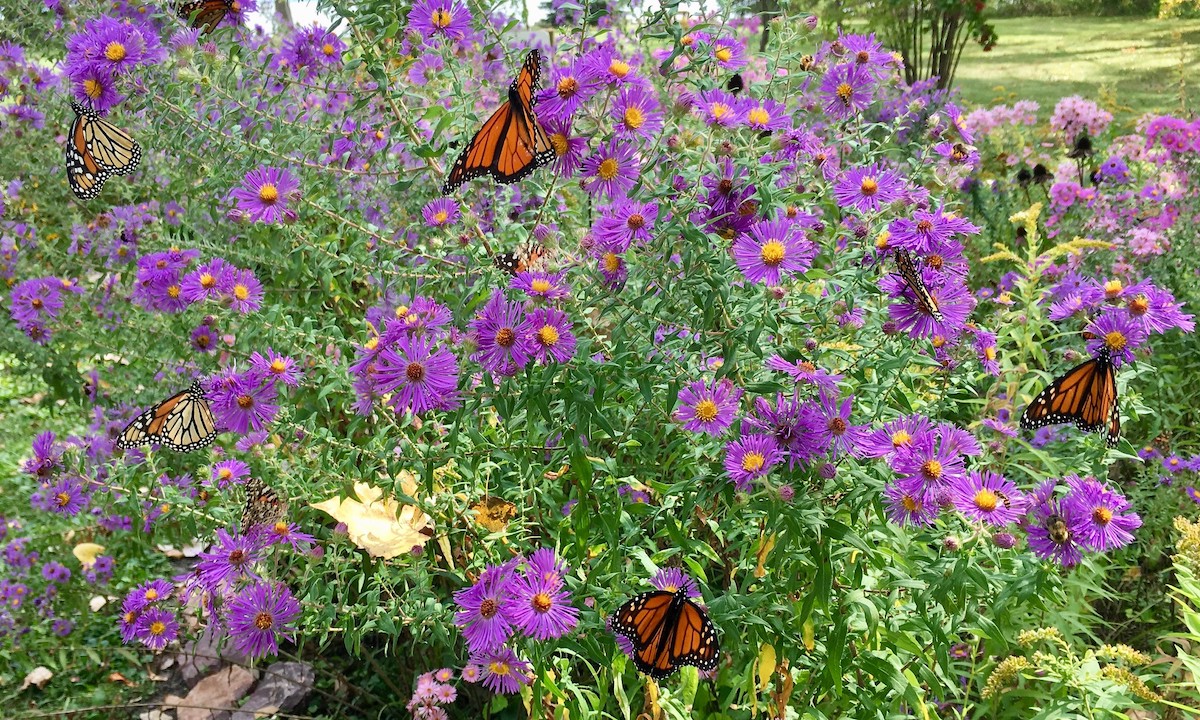Backyard Butterfly Garden Attracting Colorful Pollinators
As an avid gardener, I have always been fascinated by the beauty of butterflies. Seeing these lovely creatures fluttering around my garden brings me so much joy. That's why I decided to create a butterfly garden in my backyard. It's not just a beautiful addition to my home, but it also helps in providing a habitat for these wonderful insects. If you want to create your own butterfly garden, follow these easy steps and tips.

How to Design a Butterfly Garden
Designing a butterfly garden is pretty easy. The first thing you need to do is find the right location. Butterflies love to bask in the sun, so it's important to choose a spot that gets plenty of sunlight. Next, you need to choose the right plants. Butterflies are attracted to bright colors like red, orange, yellow, and pink. Some good plants to consider include zinnias, lantana, and butterfly bushes. Once you have your location and plants, it's time to start planting.
When planting your garden, it's important to think about the layout. Instead of planting in rows, try mixing things up by planting in clusters or groups. This will give the butterflies a place to rest and feed. It's also important to provide some shade for the butterflies. You can do this by planting some taller plants or trees around the perimeter of your garden.
Another thing to consider when designing your butterfly garden is water. Butterflies need water just like any other creature. You can provide water by placing a shallow dish or a birdbath in your garden. Just be sure to keep it clean and change the water regularly.
Tips & Tricks
Here are some tips and tricks to keep your butterfly garden healthy and thriving:
- Make sure to plant a variety of plants that bloom at different times throughout the year to ensure a steady food source for the butterflies.
- Try to plant native plants, as they are more likely to attract local butterflies.
- Avoid using pesticides, as they can harm or kill butterflies and other beneficial insects.
- Keep your garden weed-free, as weeds can smother your plants and reduce the amount of food available for the butterflies.
- Provide some shelter for the butterflies, such as a small rock or a piece of bark. This will give them a place to rest and hide from predators.
- Finally, be patient. It may take a little while for the butterflies to find your garden, but once they do, they will keep coming back.
Frequently Asked Questions
Here are some frequently asked questions about butterfly gardens:
Q: What kind of plants should I avoid planting in my butterfly garden?A: You should avoid planting plants that have been treated with pesticides or chemicals, as they can be harmful to butterflies and other beneficial insects. You should also avoid planting plants that are not native to your area, as they may not provide the right type of food for local butterflies.
Q: How do I attract butterflies to my garden?A: To attract butterflies, you need to provide them with the right food and habitat. This means planting brightly colored flowers, providing water, and providing shelter. You can also create a butterfly feeder by placing a mix of sugar and water in a shallow dish.
Q: How do I care for my butterfly garden?A: To care for your butterfly garden, you should water your plants regularly, remove any dead flowers or leaves, and fertilize your plants as needed. You should also keep an eye out for any pests or diseases that may harm your plants.
Creating a butterfly garden is a great way to not only beautify your home but also to help support these important pollinators. Follow these tips and tricks to start creating your own butterfly garden today!
Sources:
- Lawnstarter - How to Start a Butterfly Garden
- The Old Farmers Almanac - How to Plant a Butterfly Garden


Post a Comment for "Backyard Butterfly Garden Attracting Colorful Pollinators"